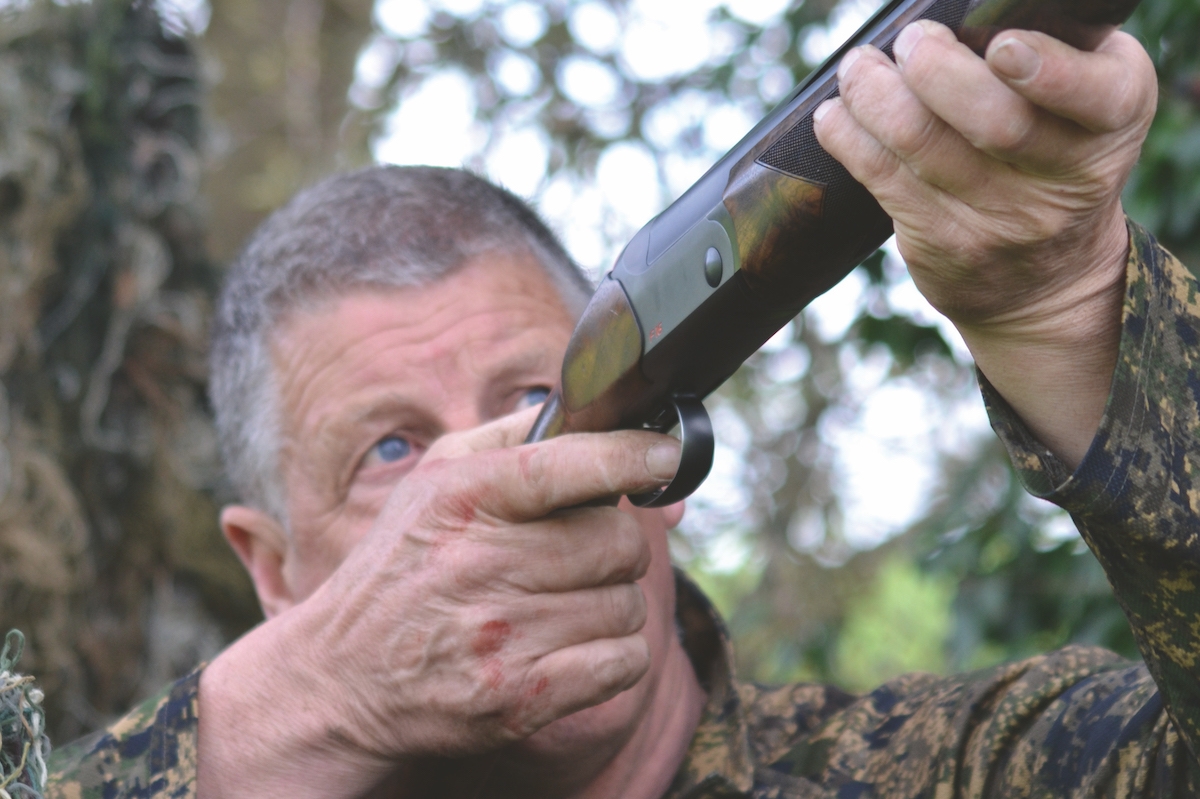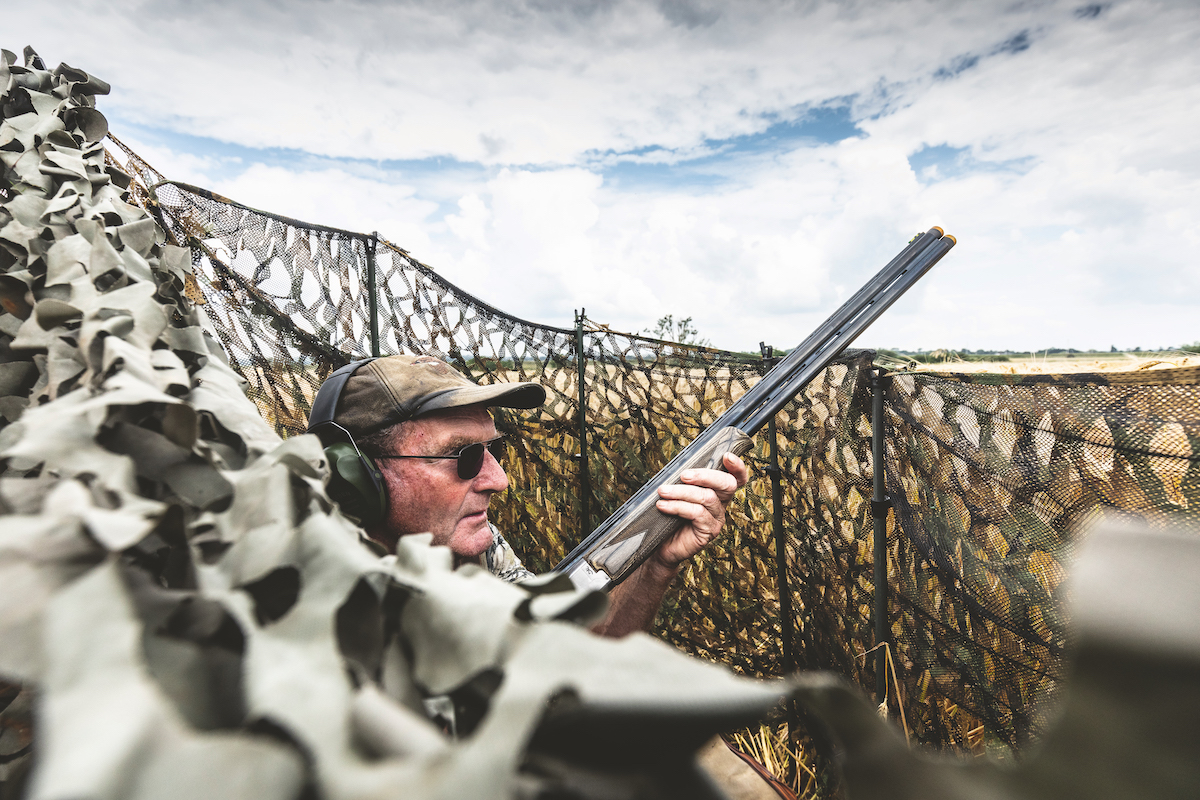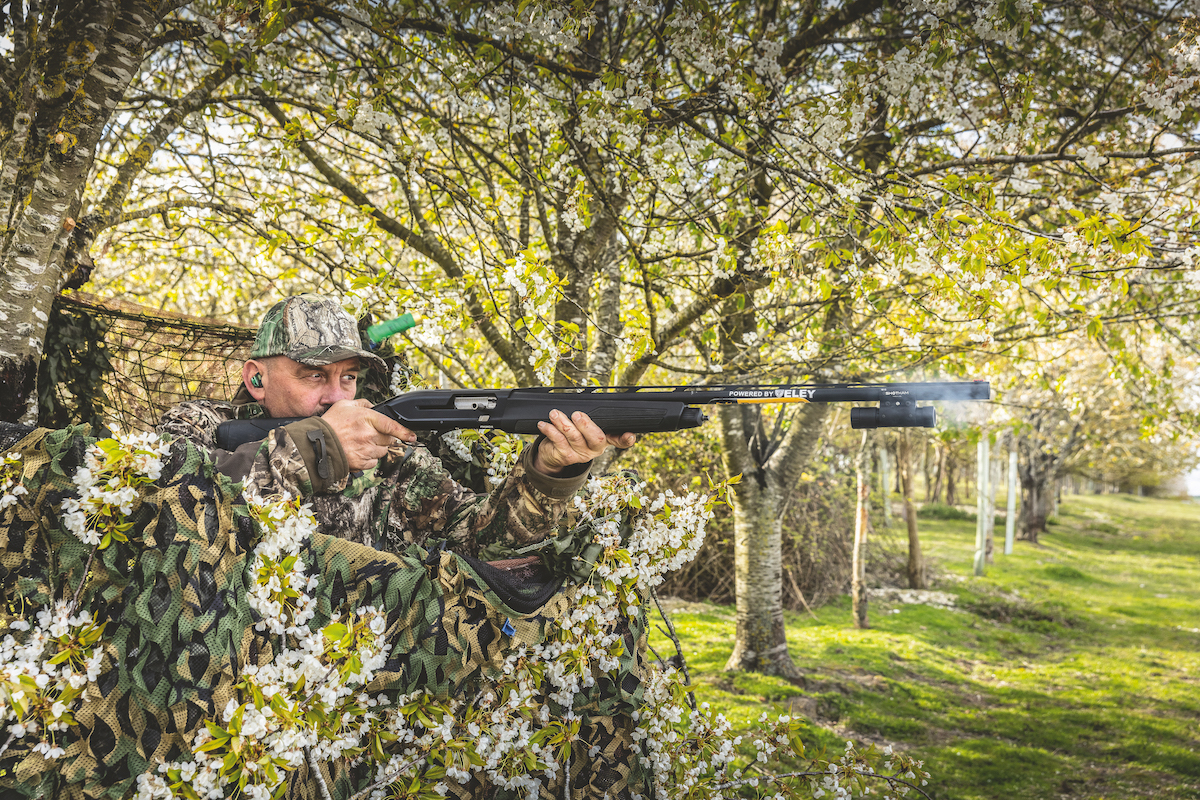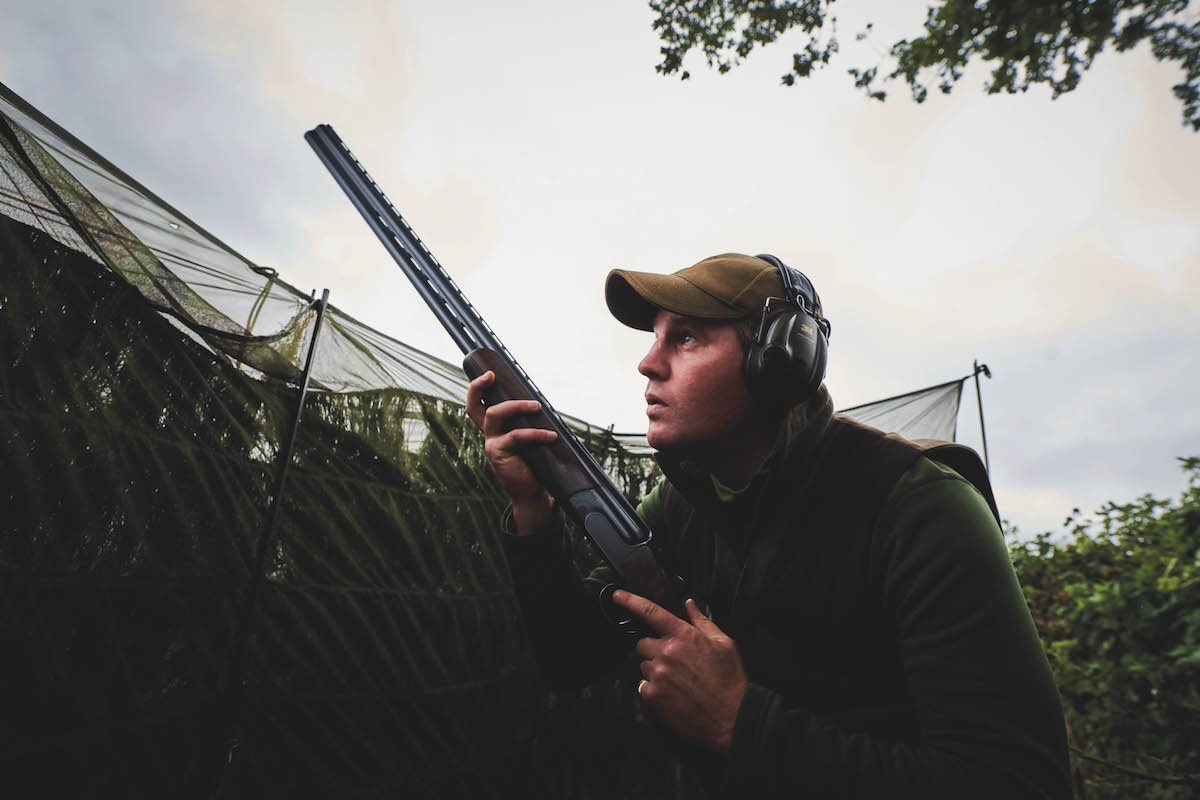Top tips for pigeons
Andy Crow shares some details about his shooting background and gives essential advice for controlling pigeons on your patch

Andy shoots pigeons to protect his crops, and he finds them one of the most sporting birds
In this first article with Andy ‘Crowman’ Crow, we thought it would be nice to give you – our readers – the pleasure of getting to know him a little better. Many of you will have watched Andy’s exploits on YouTube over the years and read about him in the shooting press, so he’s far from the new kid on the block; nevertheless, he is new to this magazine, and from here on in he will be supplementing Geoff Garrod’s offering with a monthly dose of stories, tips and advice on pigeon and corvid control.
So, without further ado, meet Andy Crow…

Plastic bags can be used to scare pigeons from one area of the field to where you are shooting
Shooting background
“For those who don’t know me, I am an arable farmer on the Kent/Surrey border, and I have been all my life. I began shooting when I was about six years old, using an old air rifle to shoot rabbits and rats, and by the time I was seven I was learning the ropes with a .410 shotgun. By the age of eight or nine I was really getting the hang of it. My granddad and uncle would shoot pigeons from a hide and they’d position me under a nearby tree for the day so I could shoot any pigeons that landed in the branches. I have moved on since then, and I can shoot the odd one in flight now … if I’m having a good day!”

Andy Crow
Why you shoot pigeons
“As is the case for most farmers, I shoot the pigeons for crop protection. Pigeons are the main pest now – it used to be rabbits, but there’s not so many around these days and it’s pigeons that do the bulk of the damage. They can absolutely destroy a crop if you don’t stay on top of them.
“I shoot them all through the year, at any time they’re doing damage. It’s been a bit lean over the past few months, but they have recently started to build in numbers and, in terms of shooting opportunities, it’s looking like it’ll be a good summer.”

A good hide set-up is key to a successful day on the woodies
Why do you love pigeon shooting so much?
“Pigeon shooting is great fun and I think they’re one of the most sporting birds out there. I enjoy shooting them any which way and I swap between decoying and flighting them, depending on the circumstances. They’re very challenging and no two shots are the same; they move if they see you and they will deviate from the line they’re on, unlike a pheasant, which will generally fly straight and stick to the line. They also make great eating, which is a happy bonus.”

Cover your shot birds with a net to keep the flies off them, and place them out of the sun
Top tips for spring rape
“I thought I’d start off this new series with some tips for shooting over spring rape, since I’ve noticed the numbers starting to build on it recently.
“They went from 15 to 20 in the first week of June to over 300 on the weekend of 10 and 11 June. Last year we didn’t get any at all on the spring rape – it went in earlier and it grew away from them quickly, meaning it was too tall for them to land on and the numbers just never built up on it.
“This year, the spring rape went in later, and with no rain it’s hardly grown at all, meaning it’s stayed short enough for them to land in. The pigeons will stay on it now until they can’t land on it anymore. They like the leaves and they love the flowering buds, so this will be a good crop to watch over the next few months.
“At this time of year, there’s no need to get there early, and I generally won’t set up until about 1pm. They come very early in the morning for a first feed, go away to digest, and then come back for a second feed around lunchtime. They’ll then keep coming until about 6pm or 7pm, so prepare yourself for a late one.
“They should decoy quite well the first few times you go out because they won’t have been shot at much. There’s also generally not much else for them to be eating until the barley goes flat or gets cut, or until they start feeding on standing wheat. However, wheat is behind this year, meaning they’ll be on the rape for longer.
“Before you shoot the field, you always want to be watching for flightlines to see where they’re coming and going from. This is the art of pigeon shooting (once you can hit them that is). If you don’t learn how to read your flightlines, you won’t be successful.
“I’ll be watching the field for several days in the run-up to shooting it, and I will carefully work out where to set up based on that information. If I can find a clear flightline, I will try to set up right underneath it. If there seem to be two strong flightlines, I will position myself between them and try to decoy them off the two lines.
If it’s a large field and I notice there are a couple of places the pigeons are heading for, I’ll put plastic bags up on poles or sticks so they blow in the wind and scare them away from one of the areas. Of course, if you’re shooting with a partner, you can cover both areas, and I often shoot with my cousin Gary.
“In terms of weather, you always want a bit of wind to help them stay on the flightlines, and apart from anything, it also helps to keep you cool in summer weather.
“It definitely pays to keep the shot birds out of the sun in the shade, so they don’t spoil. Cover them up with a net to keep the flies off and keep them as cool as possible until you can take them to the chiller at the end of the day. It goes without saying that if you shoot with a dog, you need to be very careful in this warmer weather. Bring lots of water, keep them in the shade and keep an eye on their behaviour to watch for any signs of overheating.
“At the moment, there are quite a lot of jackdaws getting on the standing wheat too, so I’ll be on them shortly – watch out for that film coming up on Shooting & Country TV. Until next month, enjoy your shooting and stay safe.”








